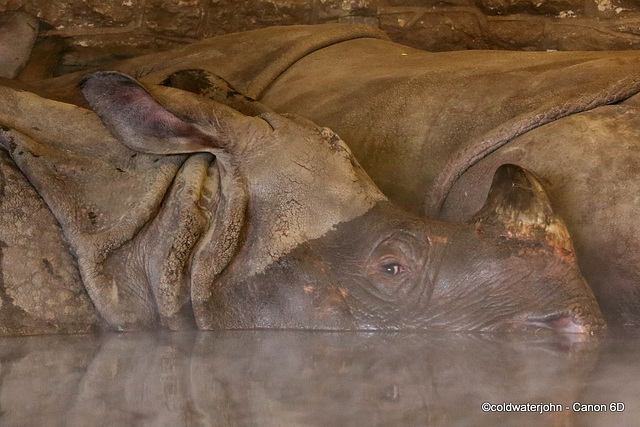Otter family out in the snow
Otters
What's this stuff, Mum?
Otter Family
I'm keeping an eye on you...
I can see you...
Mr and Mrs Golden Tamarin
Mother and Child
Like my Fascinator?
This weather is for the Birds...
Painted Hunting Dog
A very Fine Beak!
Cool Jade, Edinburgh
Highland Winter Journey
Highland Winter Journey
Highland Winter Journey
Highland Winter Journey
Highland Winter Journey
Highland Winter Journey 8412507926 o
Highland Winter Journey
Highland Winter Journey
Highland Winter Journey
Highland Winter Journey
Penguin
Amur Leopard
I'm watching you very closely!
I haven't had lunch yet...
Scottish Zebras! What's with this white stuff?
Pitlochry Station - Bookshop Closed!
First Class - For Goofing, in solitary splendour!
Inverness Station - evening.
No time for a haircut...
The First Age of Private Railway companies.
Not a great day to be setting off this evening on…
If he eats much more, he'll be opening the door h…
The Orchard Robin waiting for breakfast
The Orchard Robin, waiting for his food
Art Deco Clock 1920s
Canon 6D with Leitz 2x Extender and Angenieux 70-2…
This morning at the feeder
This morning at the feeder
Headless fluffy siskin asleep in the cold
This morning at the feeder
Why would anyone want to cage such beautiful birds…
Runway Occupied - Do Not Land!
1/20 • f/11.0 • 168.0 mm • ISO 12800 •
Canon EOS 6D
EF70-200mm f/2.8L IS II USM
See also...
Authorizations, license
-
Visible by: Everyone -
All rights reserved
-
82 visits
Rhino having a hot bath


In the wild, Indian rhinos (Rhinoceros unicornis) can be found in Assam, India and over the border into Nepal. They inhabit tall grass forests, but increasingly they have to use more cultivated land as man has encroached on their habitat. They mostly eat the tall grasses but will also eat leaves, shrubs, bark and fruits.
Male rhinos are solitary, with unstructured, overlapping territories. Female rhinos are also solitary except when they are with their calves.
In the past, Indian rhinos could be found across the entire northern part of the Indian subcontinent. Indian rhino populations declined drastically from 1600 – 1900 due to habitat destruction, sport hunting, and poaching. The species was on the brink of extinction at the beginning of the 20th century. Strict protection by the Indian and Nepalese wildlife authorities has helped these populations to recover from a total population low of 200 in the early 1900s to an estimated 2,575 in the wild in 2007.
Indian rhinos are still threatened by habitat quality loss due to severe invasion of alien plants and loss of wetlands and grasslands due to forest encroachment. Another severe threat is poaching, mainly for the use of the horn in traditional Chinese medicine.
Because of their population increases in recent years, the Indian rhinoceros is listed by the International Union for Conservation of Nature and Natural Resources (IUCN) as Vulnerable, meaning that it is considered to be facing a high risk of extinction in the wild.
Breeding programme category: EEP
IUCN Red List category: Vulnerable
Male rhinos are solitary, with unstructured, overlapping territories. Female rhinos are also solitary except when they are with their calves.
In the past, Indian rhinos could be found across the entire northern part of the Indian subcontinent. Indian rhino populations declined drastically from 1600 – 1900 due to habitat destruction, sport hunting, and poaching. The species was on the brink of extinction at the beginning of the 20th century. Strict protection by the Indian and Nepalese wildlife authorities has helped these populations to recover from a total population low of 200 in the early 1900s to an estimated 2,575 in the wild in 2007.
Indian rhinos are still threatened by habitat quality loss due to severe invasion of alien plants and loss of wetlands and grasslands due to forest encroachment. Another severe threat is poaching, mainly for the use of the horn in traditional Chinese medicine.
Because of their population increases in recent years, the Indian rhinoceros is listed by the International Union for Conservation of Nature and Natural Resources (IUCN) as Vulnerable, meaning that it is considered to be facing a high risk of extinction in the wild.
Breeding programme category: EEP
IUCN Red List category: Vulnerable
Cameron has particularly liked this photo
- Keyboard shortcuts:
Jump to top
RSS feed- Latest comments - Subscribe to the comment feeds of this photo
- ipernity © 2007-2025
- Help & Contact
|
Club news
|
About ipernity
|
History |
ipernity Club & Prices |
Guide of good conduct
Donate | Group guidelines | Privacy policy | Terms of use | Statutes | In memoria -
Facebook
Twitter
